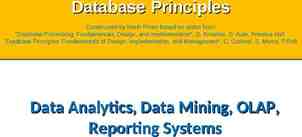Improving Student Retention through Critical Thinking
28 Slides9.42 MB
Improving Student Retention through Critical Thinking Application Activities C. McMullen, MSN, RN Northwest MS Community College
Objectives Identify An innovative teaching strategy you’d like to use! Assess for barriers to implementing innovative teaching strategies! Discuss ways to overcome these barriers!
Reference: (Gracious Quotes, 2021)
What is Critical Thinking Application (CTA) ?learned Method of applying the information in lectures Accommodates visual and kinesthetic learners Reiterates hard skills (assessment and procedures) Reinforces soft skills (communication, empathy, teamwork)
How has NWCC Nsg used CTA? Reinforcement tool Builds critical thinking skills Encourages student engagement Prepares students for upcoming exams Preparation for clinical Incorporation of pertinent clinical documents *For CTAs to be effective, content should be meaningful (pertinent to testing/evaluation).
CTA: When? The last class day before the exam is typically CTA day. Nsg I is front-loaded. Theory content is taught before check-offs and clinical. Students have all lecture content for the upcoming exam before CTA day. Usually weekly or every other week until the Final Exam
CTA: How? Determine how many stations are needed based on lecture topics. Divide students into small groups. Prepare each station the day before. Can be modified to the needs of the course Other courses: groups have ½ day to rotate through fewer stations Computer stations for practice quizzes may be self-led if no instructor is available.
Nsg I CTA Set-Up Location Station 1: Basement Classroom (side 1) Station 2: Basement Classroom (side 2) Station 3: Basement Sunroom Station 4: Computer Lab 138 Station 5: Freshman Instructor Skill McMullen TPR (Vital Signs) Beaver BP, Apical HR (Vital Signs) Coey Intro to Nsg/ Maslow Activity Evans Demographi c Survey/ F. A. Davis Quiz Bed Bath/ Making Group (by last name) AC D-G H-M N-R
Nsg I CTA Set-Up Schedule Station 1: 08100910 Station 2: 09201020 Station 3: 10301130 LUNCH 1130-1230 Station 4: 12401340
“I’m not creative. How can I apply CTA?” Hard Skills Soft Skills Vital Signs, Ht/Wt, Handwashing Maslow’s HierarchyPrioritization Game Health Assessment Nursing Process Puzzle NG/ enema Communication Case Study Medication Administration Teaching/ Learning Activity Foley Catheter Concept Mapping Scenarios w/ manikins PPE Documentation Practice Transfers/ Range of Motion Dosage Calc Practice Combination on Final Day: Surveys/ Evals Escape Room *Any concept or skill that needs more reinforcement can be made into a
“I’m not creative. How can I apply CTA?” Hard Skills Theoretical Content IV skills Jeopardy In and Out Catheter Insertion Kahoot! Tracheostomy Menti-Meter Port-a-Cath Socratic Questioning Safety Scenarios Hurst Next Gen Scenarios *Any concept or skill that needs more reinforcement can be made into a
Benefits of CTA For Students: Smaller groups! Opportunities to make connections with concepts and people! Makes learning fun! Increases confidence in critical thinking! Allows students to reflect on their “muddy points” For Faculty: FLEXIBLE/ADAPTABLE to your needs! Once created, very easy to implement! Interactive Learning vs. Critical Thinking Application Hours
Supporting Data Critical thinking is a component of nursing judgment that is essential for new graduate nurses’ competency (Patterson et al., 2017). “Nursing education is experiencing the challenges of a nurse faculty shortage, increasingly sophisticated technologies, and the stimulation of a diverse student population” (Christensen & Simmons, 2020,
Supporting Data To stimulate critical thinking development, students must be allowed to ask meaningful questions and find the answers by themselves. The educator’s role is to facilitate this experience while challenging, stimulating and supporting students in the search for the answers to their own questions (Urcula-Pardo et al., 2018). “Integrating concepts of active learning and selfdirection while aligning expectations and creating overlap between classroom and clinical domains can assist in addressing the challenges faced by new
Nursing I Course Retention Rate Timeline 100% 90% 80% 70% 60% 50% 40% 30% 20% 10% 0% Fall 2020 Spring 2021 Fall 2021 Spring 2022 Course Retention Rates Fall 2022
NWCC SON Overall Program Retention Timeline 100% 90% 80% 70% 60% 50% 40% 30% 20% 10% 0% Fall 2020 Spring 2021 Fall 2021 Spring 2022 Fall 2022
Student Feedback: “I really appreciated how the instructors incorporated CTA days, as it helped with check-offs and exams.” “CTA days are AMAZING! Please keep them!” “You have given us all the resources and exposure you could possibly give, especially with CTA days.” -Nsg I Evals
ference: Nsg I Faculty (2021-2023)
Reference: Nsg I Faculty (2021-2022)
Take-Aways Critical Thinking Application (CTA) activities increase one’s ability to apply theoretical information to practice. CTA increases student retention, competence, and confidence. CTA is a fun way to bring “real-world” scenarios to the classroom setting before exposure to clinical. Reference: Nsg I Faculty (2021)
Where we All levels are now are CTA implementing activities in their courses! Overall Program Retention Rate of 84.9% after Fall 2022! Where we’re Increased program going! retention! Increase in nursing graduates!
MOADN Faculty Challenge 10 Minute Group Discussion What content areas do students have the most difficulty with on exams? How can you incorporate CTA activities into these content areas? Is there a critical thinking application activity you’d like to use? What are the barriers to implementing CTA activities? How can you overcome those barriers? Nominate one spokesperson per table to share responses at the end of the discussion.
Share Time! Listeners: What recommendations can you offer?
Questions?
Special Thanks Ms. Stacy Taylor: for the idea! Nursing I Team: for your support, for your creativity, and for your acceptance of this endeavor! Mrs. Monica Williams & Dr. Erin Harrington: for adjusting your schedules to make the plan work! Mrs. Lacey Gentry: for supporting new, creative ideas! Nsg II-IV: for your buy-in! Thank you all for listening!
Thank You! Courtney McMullen, MSN, RN Course Coordinator for Nursing I Northwest MS Community College GLS SON Building, Office 109 [email protected] 662-560-5208
References Barrett, J. L., Denegar, C. R., & Mazzerole, S. M. (2018). Challenges facing new educators: Expanding teaching strategies for clinical reasoning and evidence-based medicine. Athletic Training Education Journal, 13(4), 359-366. DOI: 10.4085/1304359 Christensen, L. S., & Simmons, L. E. (2020). The scope of practice for academic nurse educators and academic clinical nurse educators (3rd Ed.). Wolters Kluwer. Gracious Quotes. (2021, Dec. 9). 35 motivational dare-to-try quotes. Graciousquotes.com. https://graciousquotes.com/dare-to-try/ Patterson, E. E. B., Boyd, L., & Mnatzaganian , G. (2017). The impact of undergraduate clinical teaching models on the perceptions of wo rk-readiness among new graduate nurses: A cross-sectional study. Nurse Education Today, 55 (Aug. 2017), pp. 101-106. http://dx.doi.org/10.1016/j.nedt.2017.05.010
References Unpublished CTA Photos (2021-2023). Nsg I faculty (with permission from students). Urcola-Pardo, F., Blazquez-Ornat, I., Anguas-Gracia, A., Gasch-Gallen, A., & GermanBes, C. (2018). Perceptions of nursing students after performing an individual activity designed to develop their critical thinking: The “critical card” tool. Nursing Education in Practice, 29(2018), 35-40. https://doi.org/10.1016/j.nepr.2017.11.005

































